Figuring out the last year …
22/04/2012 3 Comments
WordPress has just introduced a few new ways of tracking what’s happening with my blog.
The main “dashboard”, as they call it (I really tire of car-based metaphors, like cars are the only way to get anywhere …), shows a summary of recent activity – like my posts and other people’s comments. I now have made 135 posts, which on average, have each received about 4 comments.It has also detected and deleted over 3000 spam messages, which is most kind. I did find one real message lurking in my ‘spam’ folder, so hopefully that has been the only one it trashed accidentally. I also have a lengthy list of draft posts … just waiting for some spare time.
WordPress tells me that my top commentators are luKe, bitbot, adina west, natalie, justin and katharine (at least some of those names are real!). Thanks to all who have made comments. I love comments!
The blog also has a page devoted to view-stats. Over the last couple of years, the blog has had nearly 15,000 views (ie one page being opened), an average of about 20 per day. Admittedly, for most regular bloggers, this would be considered a relatively low figure, but I guess I haven’t been making much effort to cross-promote via other social media … trying to keep a small shred of anonymity.
As WordPress loves to remind me, the more I blog, the more views I get. But, I also have a life enough to not worry too much about getting a million hits and becoming an interwebs sensation.
This page also tells me how some people arrive at the blog – via search terms entered into Google and other search engines. Yesterday, this is how 12 people found the blog. Some of the terms used are pretty amusing … “monkey pulls the turnip”, “people in pyjamas” or “functionalism as an oxymoron” are just a few of the important issues that I appear to have been writing about.
When I view the stats over the last 2 years, I can see which topics draw in the crowds. Far and away, the most compelling topic is Wee Britain, invented by the TV show Arrested Development and referred to in my post on Thamestown. Similarly, various searches for “Hollandtown“, “Holland Village“, “fake Holland in Shanghai” have led people to this post, as searches about Chinese ghost towns, especially Ordos City, have taken people to this post about Kangabashi.
25 people have found my blog by searching for “how to please your parents” – most likely disappointed to find that my best advice is to build them a ridiculously large garden. A similar number arrived via searches for “baby split pants” – presumedly to find this post.
WordPress doesn’t link the search term with the actual page viewed, so I am not always sure of how the connection gets made. Some of the more interesting searches have been “stylish farmer look” (2 people, heading here), “babies neglected and tied to high chairs in China” (3 people, not sure what page they ended up at), “chocolates and a louis vuitton bag for valentines day” (2 people actually put these words into Google!), “crayzy sex” (woah!), “pyjama slap” (this means something to at least 2 people in world) and “seducing your mother” (I did ask for this … see here).
The third biggest group of random visitors must have enjoyed reading my post on the Shanghai Urban Planning Exhibition Hall … containing what I described as a “huge-ass model” of the city. Over 100 people have accessed this page via searches for a variety of terms, including “models with huge asses“, “huge ass” and “ass models“.
A new function is a map showing the geographic spread of blog viewers. As you can see, over the last two months, I am reaching a pretty global audience. Although, I admit, most of these are random single-view visitors – I am yet to befriend anyone currently based in Finland, Ethiopia or Honduras. But, Australians! Currently second place to the US … I see you can pick up your act a little.
All this stat-crunching inspired me to make a few little diagrams of my own, summarising some of the other things that I have been doing recently.
For example, over the last 12 months, I spend a lot of time on planes – over 150 hours in the air (about a full week … not to mention the time spent in airport, sometimes waiting several hours for a delayed plane). I went to Lanzhou 5 times, Tianjin (see here and here and here) quite a lot, Sydney 4 times. The year before was just the same. It’s mostly for work. Small carbon footprint, begone!
But, when I can, I will catch the train for work. The last long-haul was to Rui’an – normally it is a 5.5 hour ride, but as they had had a fatal crash the week before, everything was slowed by several hours. We now fly there instead. Last year, they opened the Beijing-Shanghai express line, so we used that to get to the capital for our National Holiday last year (see here and here and here and here and here and here). It’s an important part of the huge and quite amazing rail network that China is building. It’s particularly good for accessing the big cities close to Shanghai (like Nanjing, which I’ve been to, like, a million times … see here and here and here)
And finally, here is a diagram of the vegetarian restaurants of Shanghai, matched with the frequency of our visits. The big blobs (Kush, Annamaya and Godly) have the distinction of great food and/or close proximity to our apartment.
Surely eating all of that vegetarian food has got to go some way towards offsetting my carbon-hungry travel habits …




















































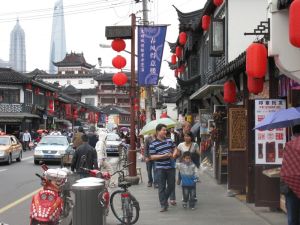

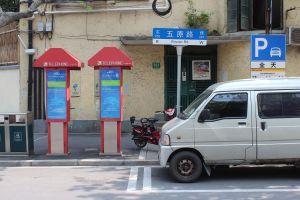

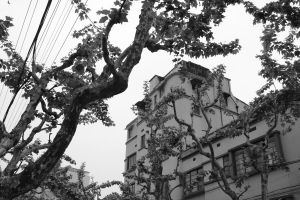


























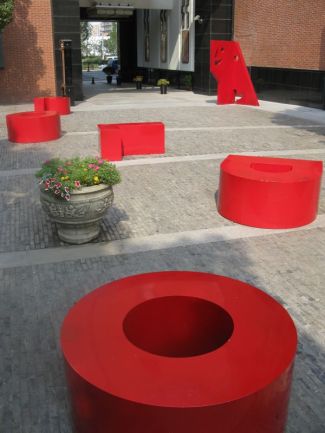


















































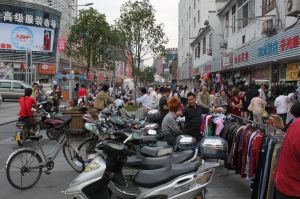









































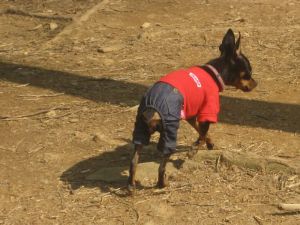











RECENT COMMENTS …